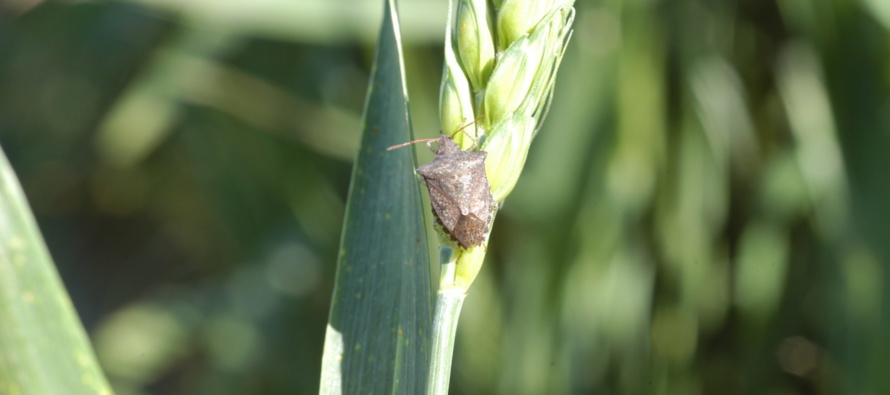Should We Treat Stink Bugs in Wheat?

Related Articles
- 2010 Soybean And Corn Variety Trial Data 3
- Mississippi Cotton Insect Situation of 2010: A Look Back 3
- Rice Insecticidal Seed Treatment Recommendations for Mississippi in 2011 0
Latest Tweets
Over the last week or so we have a few calls coming in about stink bugs in heading wheat. It is not uncommon to find stink bugs in wheat after head emergence. However, it takes extremely high numbers to cause economic damage to heading wheat. With this in mind, seeing high numbers of stink bugs while walking a wheat field may seem alarming, but it takes a lot of stink bugs to cause economic damage. Research from the early 80’s showed that the milk stage of development is most susceptible to damage from stink bugs by reducing grain weight and germination. However, stink bug thresholds for wheat are 1 stinkbug/5-10 heads in the milk and soft dough stage. There is no threshold for sweep nets but given the visual threshold, it would take somewhere well above 50 per 25 sweeps to reach a threshold. Although not impossible, it is rare to see these numbers. Once wheat reaches the hard dough stage the likelihood of damage from stink bug is diminished greatly. At this time the predominant stink bugs being found in Mississippi are rice and brown stink bugs. Because we do not generally treat a lot of wheat for stink bugs, wheat can actually harbor lots of stink bugs that will eventually move out into corn when the wheat begins to hit hard dough. Watch field edges that are adjacent to small corn, and scout the corn closely if it is shorter than 24 inches.




Let me tell You a sad story ! There are no comments yet, but You can be first one to comment this article.
Write a comment